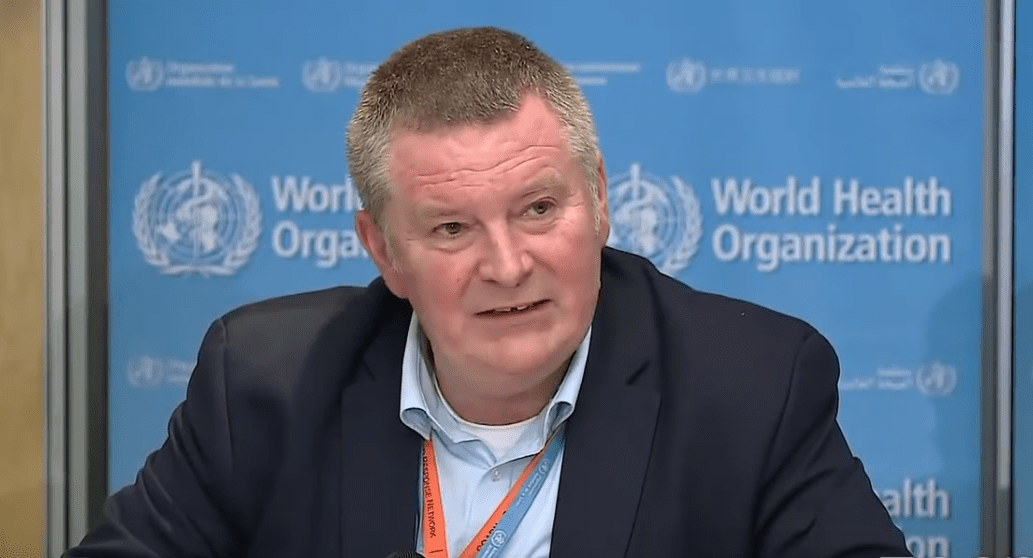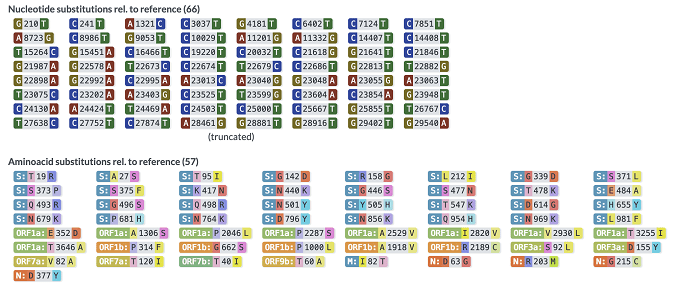
Netherlands: Five scenarios for the future of the pandemic
The Netherlands has published a new guide to the future of the pandemic, laying out five possible scenarios for its evolution, including a worst-case scenario.
This is a weighty report – it’s nearly 150 pages long – and covers an awful lot of ground. It is possibly the first report we have read in the nearly three years of the coronavirus pandemic that tries to answer really thorny questions such as how to manage a potential societal collapse caused by an increasingly severe pandemic.
“Literature refers to the normalcy bias. This means that people tend to assume that everything will stay the same, even when there are clear signs that it is most likely not going to be the case. The inhabitants of Pompeii watched the eruption of Mount Vesuvius for hours without thinking of fleeing.”
Scenario V – the worst scenario (in part)
Mutations of the virus make COVID-19 more deadly. The virus is circulating worldwide and claims more victims every year, in all age categories. Everyone is potentially vulnerable.
People who have had the infection or have been vaccinated are only protected against severe COVID-19 for a limited time and quickly become susceptible to reinfection again. Vaccines are occasionally available, but the virus mutates faster than the vaccines can be developed, produced and used. After a number of years, the virus will become less intense and the pandemic may ‘extend’, but before that there may be severe outbreaks for a longer period of time, with everyone at risk of a serious or even fatal disease course.
Society and the economy are going through a long period of serious disruption.
Certain sectors are no longer economically viable. The countries around us are fighting their own struggles to keep society going. All conceivable measures that can contribute to limiting the number of deaths and maintaining health care and other vital sectors are on the table, including very strict lockdowns. At the same time, the government tries to keep the economy going and to guarantee the basic needs of society (care, food, energy). Because the fear of the virus is great, people will also take far-reaching actions to protect themselves against it. Physical social contacts remain largely limited and many people only go out for necessary activities. The availability and ability to use modern digital facilities will be crucial for functioning in the lockdown society.
Code black in healthcare
Healthcare is overwhelmed in this scenario. All conceivable treatment locations are used: recovery rooms, empty operating rooms, large halls or other improvised areas. People who work in care drop out; it is impossible to find enough staff. Healthcare ends up in code black. Due to the large numbers of patients and the great lack of staff, there is no place available for people who need acute care. This applies to people with a severe course of COVID-19, but also to people who, for example, have had a car accident or have a heart attack. This means that people diewho could have been saved in other situations. Ethically very difficult choices have to be made about who receives acute care and who does not.
Importance of dying with dignity
It is important as a society to think thoroughly about what it means if many people can die at the same time. Is this a subject that can be discussed openly? What is important and feasible for a dignified farewell? Can it be said goodbye and how? Will people for whom it is important from a religious point of view to be buried quickly get precedence at the inquest or will everyone have to wait? Is there enough space to keep and bury or cremate bodies? Is the Funeral Services Act adequate?
Maintaining essential services
Government policy is aimed at preserving the essential services for society and maintaining public order, in order to prevent the disintegration of society. This scenario requires very sharp choices, both within healthcare and for society as a whole. The focus is on crucial services such as care, education, food, public order, shelter, energy and a reliable media supply and cannot therefore go to all other matters. In this scenario, the government will probably have to intervene to guarantee the basic necessities of life for all its citizens, even if that means providing things on the receipt or taking over certain business activities or directing the deployment of employees and companies . Critical services also include the judiciary, the police and the public administration. It is necessary to think in advance about how, for example, parliaments can still legitimately take decisions if they no longer meet their quorum due to a large number of serious sick and dead.
Retreat in a small circle
There is a significant chance that the focus of people in this scenario narrows to the individual level. People’s attention is focused on their own survival and the security of family and friends, with more opportunities for those who can afford more. Affluent groups pay a lot of money for new treatments and geographically isolate themselves in small bubbles in which they are as self-sufficient as possible. Socially vulnerable groups cannot afford this and are forced to do the riskier work, where the chance of contamination is greater. A focus on one’s own survival also increases the chance of social unrest. Some groups will look for a scapegoat to blame for the difficult situation they are in.
Search for personnel and locations
Absenteeism and fear among healthcare staff – due to a high chance of becoming infected and dying themselves – are high. In addition, general practitioner practices and community care will flood because hospitals and outflow facilities (nursing home, rehabilitation places) will no longer be accessible for all care. As a result, patients turn to other care locations or care providers. In this scenario, all the (former) healthcare personnel outside the hospital in order to guarantee the accessibility of acute care as well as possible. All available locations where patients can be treated should be used. Examples are recovery rooms, empty operating rooms or large halls in a nursing ward in a hospital or nursing home.
Distribution and transfer of patients within the Netherlands and within Europe is no longer possible due to a lack of admission capacity in the surrounding countries and a lack of services such as ambulance care.
Code black in healthcare
Despite all efforts, the demand for healthcare capacity is many times greater than the healthcare sector can meet. As a result, the quality and accessibility of care deteriorate and people die because there are no facilities to treat them. Due to the high absenteeism in all sectors, the fear among the population and the lack of materials, more and more (seriously) ill people are staying at home, which leads to a great mental burden for informal carers and voluntary help. Because patients can no longer go to hospital, the excess mortality is high. This affects all walks of life. A choice must be made which patients can be admitted to the hospital. The Federation of Medical Specialists has drawn up a manual for dealing with this triage.
Die with dignity
The higher chance of death brings with it ethical dilemmas for which the sector must be as well prepared as possible. Dealing with dying in a dignified manner, both in care and beyond, demands something from citizens, relatives, care professionals and care administrators in this scenario. The government can encourage healthcare professionals and healthcare organizations to have plans ready for how to deal with this. This can lead to ideas to prevent people from dying in total isolation. During the corona crisis, for example, a group of doctors and nurses committed themselves to special palliative units in a hospital where people could die with dignity in the presence of loved ones, despite corona.
The entire report is translated into English below
Coronascenario’s+doordacht-Handreiking+voor+noodzakelijke+keuzes+2022 ENGLISH
Netherlands report: Thoughtful Corona scenarios – a guide to necessary choices (in Dutch)
Video: Thoughtful Corona scenarios (In Dutch)
** Editors note:
Google translate seems to have confused the “worst scenario” for the “würst scenario” and simply ended up translating it as the “Sausage scenario”…





